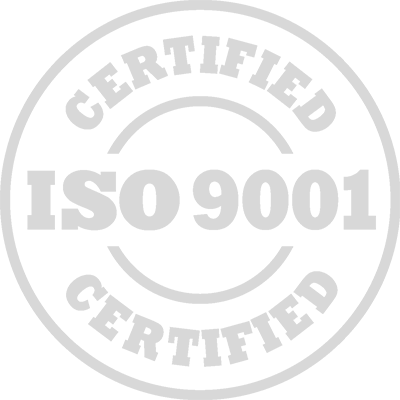| REF: | 15538_313955 |
| DATE: | 18 - 29 Nov 2024 29.Nov.2024 |
| LOCATION: |
Barcelona (Spain) |
| INDIVIDUAL FEE: |
8500 Euro |
Introduction:
The First Aid at Work course has been designed to meet the requirements laid out as part of TQUK Level 3/6 RQF you will receive a TQUK RQF certificate, valid handle emergencies at work and scenario training for several workplace First Aid incidents and provides the learner with the skills they need to manage and take control of a First Aid accident at work.
Targeted Group:
- Employees in various industries seeking basic first aid skills.
- Suitable for workplaces where low-risk hazards are present.
- Ideal for small to medium-sized businesses with minimal first aid requirements.
- Applicable to all industries including office settings, retail, hospitality, and education.
- Designed for individuals without prior first aid training.
- Geared towards employees responsible for providing initial emergency response.
- Beneficial for enhancing workplace safety and compliance with regulations.
- Relevant for managers, supervisors, and employees involved in health and safety protocols.
- Addresses common workplace injuries and medical emergencies.
- Provides practical knowledge and skills to handle accidents until professional medical help arrives.
Course Objectives:
By the end of this training, the participants shall:
- Understand the role and responsibilities of the first aider.
- Be able to assess an emergency safely.
- Be able to provide first aid for a casualty who is unresponsive and breathing normally.
- Be able to provide first aid for a casualty who is suffering a seizure.
- Be able to provide first aid for a casualty who is unresponsive and not breathing normally.
- Be able to place AED pads correctly.
- Understand how to provide first aid to a casualty who is suffering from shock.
- Be able to provide first aid to a casualty with external bleeding.
- Be able to manage a casualty with a minor injury.
- Be able to recognize a casualty who is choking.
- Be able to conduct a secondary survey.
- Be able to administer first aid to a casualty with injuries to bones, muscles, and joints.
- Be able to administer first aid to a casualty with suspected head and spinal injuries.
- Be able to administer first aid to a casualty with suspected chest injuries.
- Be able to administer first aid to a casualty with burns and scalds.
- Explain the factors that affect the severity of burns and scalds.
- Be able to administer first aid to a casualty with an eye injury.
- Be able to administer first aid to a casualty with sudden poisoning.
- Be able to administer first aid to a casualty with anaphylaxis.
- Be able to provide first aid to a casualty with suspected major illness.
Targeted Competencies:
- Mastery of basic first aid techniques.
- Focus on assessing and managing emergencies promptly.
- Proficiency in administering CPR and using automated external defibrillators (AEDs).
- Ability to recognize and respond to common workplace injuries such as burns, cuts, and fractures.
- Skill in controlling bleeding and applying appropriate bandaging.
- Competence in managing choking incidents and assisting individuals with airway obstruction.
- Understanding of legal and ethical considerations related to providing first aid.
- Capability to communicate effectively and coordinate with emergency medical services.
- Knowledge of workplace-specific protocols and emergency response procedures.
- Confidence in maintaining composure and providing reassurance to injured individuals.
Course Content:
Unit 1: General First Aid Information:
- Overview of basic first aid principles and practices.
- Introduction to the importance of early intervention in emergencies.
- Explanation of the "ABCs" of first aid: Airway, Breathing, and Circulation.
- Understanding the concept of the "Chain of Survival" and its relevance in emergency response.
- Overview of common workplace hazards and potential injuries.
- Identification of signs and symptoms of medical emergencies such as heart attacks and strokes.
- Instruction on how to conduct a primary survey to assess the condition of an injured person.
- Introduction to the use of personal protective equipment (PPE) during first aid interventions.
- Guidance on how to create and maintain a safe environment for administering first aid.
- Importance of documentation and reporting procedures following first aid incidents.
Unit 2: Evaluation of the Patient/Scene:
- Initial assessment of the injured individual and surrounding environment.
- Prioritization of safety for both rescuer and patient.
- Examination of the scene for potential hazards or dangers.
- Assessment of the patient's responsiveness using the AVPU (Alert, Voice, Pain, Unresponsive) scale.
- Check for breathing and signs of circulation, such as pulse and skin color.
- Evaluation of any life-threatening conditions requiring immediate intervention.
- Determination of the mechanism of injury and potential risks involved.
- Collection of relevant information from bystanders or witnesses.
- Consideration of environmental factors that may affect patient care, such as weather conditions or bystander interference.
- Continuous reassessment of the patient's condition throughout the emergency response process.
Unit 3: Basic Life Support (BLS):
- Instruction on fundamental techniques to sustain life in emergencies.
- Training in cardiopulmonary resuscitation (CPR) for adults, children, and infants.
- Demonstration of proper hand placement and compression depth during CPR.
- Guidance on providing rescue breaths and maintaining an open airway.
- Practice in using automated external defibrillators (AEDs) to restore heart rhythm.
- Instruction on recognizing cardiac arrest and initiating immediate CPR.
- Training in assessing pulse and breathing to determine the need for CPR.
- Education on the importance of early defibrillation in improving survival rates.
- Techniques for performing CPR effectively as part of a team or alone.
- Emphasis on the critical role of BLS in increasing the chances of survival for individuals experiencing cardiac arrest.
Unit 4: First Aid in Bleeding:
- Identification and control of bleeding using direct pressure and elevation techniques.
- Application of sterile dressings and pressure bandages to wounds.
- Instruction on recognizing signs of severe bleeding and administering appropriate interventions.
- Guidance on how to manage nosebleeds and control bleeding from minor injuries.
- Emphasis on the importance of maintaining pressure on the wound until professional help arrives.
Unit 5: First Aid in Injuries:
- Recognition and assessment of various types of injuries including cuts, bruises, and abrasions.
- Cleaning and dressing of wounds to prevent infection.
- Instruction on immobilizing injured limbs to prevent further damage.
- Training in the use of splints and bandages for stabilizing fractures and dislocations.
- Education on monitoring for signs of infection or complications in injured individuals.
Unit 6: First Aid in Burns, Freezing, and Heat Bumps:
- Assessment of burn severity and determination of appropriate first aid measures.
- Instruction on cooling minor burns with clean water and covering with sterile dressings.
- Guidance on the management of severe burns, including the importance of seeking medical attention.
- Education on recognizing and treating frostbite and heat-related illnesses.
- Training in providing comfort measures and preventing further injury in individuals with burns or heat bumps.
Unit 7: First Aid in Fractures, Dislocations, and Sprains:
- Recognition of signs and symptoms of fractures, dislocations, and sprains.
- Immobilization of injured joints or limbs using splints or slings.
- Instruction on supporting the injured area and minimizing movement to prevent further damage.
- Education on managing pain and swelling associated with fractures and sprains.
- Training in assessing circulation and sensation in injured limbs to monitor for complications.
Unit 8: First Aid in Consciousness Disorders:
- Assessment of the level of consciousness using the AVPU scale.
- Recognition of common consciousness disorders such as fainting and seizures.
- Instruction on maintaining a safe environment for individuals experiencing consciousness disorders.
- Guidance on positioning the individual to prevent injury during episodes of unconsciousness.
- Education on monitoring vital signs and providing reassurance to the individual until consciousness is regained.
Unit 9: First Aid in Poisoning:
- Identification of signs and symptoms of poisoning, including nausea, vomiting, and altered mental status.
- Instruction on removing the individual from the source of poisoning and ensuring personal safety.
- Guidance on contacting emergency medical services and providing relevant information about the poison.
- Training in administering first aid measures such as dilution or removal of the poison if safe to do so.
- Education on monitoring the individual's condition and providing supportive care until professional help arrives.
Unit 10: First Aid in Animal Bites:
- Assessment of the wound and determination of the risk of infection or rabies transmission.
- Instruction on cleaning the wound thoroughly with soap and water.
- Guidance on controlling bleeding and applying sterile dressings to the bite site.
- Training in recognizing signs of infection and seeking medical attention promptly.
- Education on the importance of reporting the incident to appropriate authorities, especially for animal bites that break the skin.
Unit 11: First Aid for Eye, Ear, and Nose Foreign Body Escape:
- Recognition of signs and symptoms of foreign body escape, including pain, redness, and irritation.
- Instruction on safely removing visible foreign objects from the eye, ear, or nose using appropriate techniques.
- Guidance on flushing the affected area with clean water to help dislodge foreign bodies.
- Training in seeking medical attention for embedded or deeply lodged foreign objects.
- Education on preventing further injury and avoiding rubbing or touching the affected area.
Unit 12: First Aid in Drowning:
- Assessment of the individual's condition and determination of the need for emergency rescue.
- Instruction on safely removing the individual from the water, if possible, while ensuring personal safety.
- Guidance on checking for signs of breathing and initiating CPR if necessary.
- Training in providing rescue breaths and chest compressions for individuals in cardiac arrest.
- Education on monitoring the individual's condition and providing continuous care until professional help arrives.
Unit 13: Patient/Injured Transport Techniques:
- Evaluation of the patient's condition to determine the appropriate method of transport.
- Instruction on safely moving injured individuals using manual handling techniques.
- Guidance on using stretchers or other equipment for transporting patients with suspected spinal injuries.
- Training in coordinating with emergency medical services for the safe and efficient transfer of patients.
- Education on maintaining stability and supporting injured areas during transport to prevent further harm.


